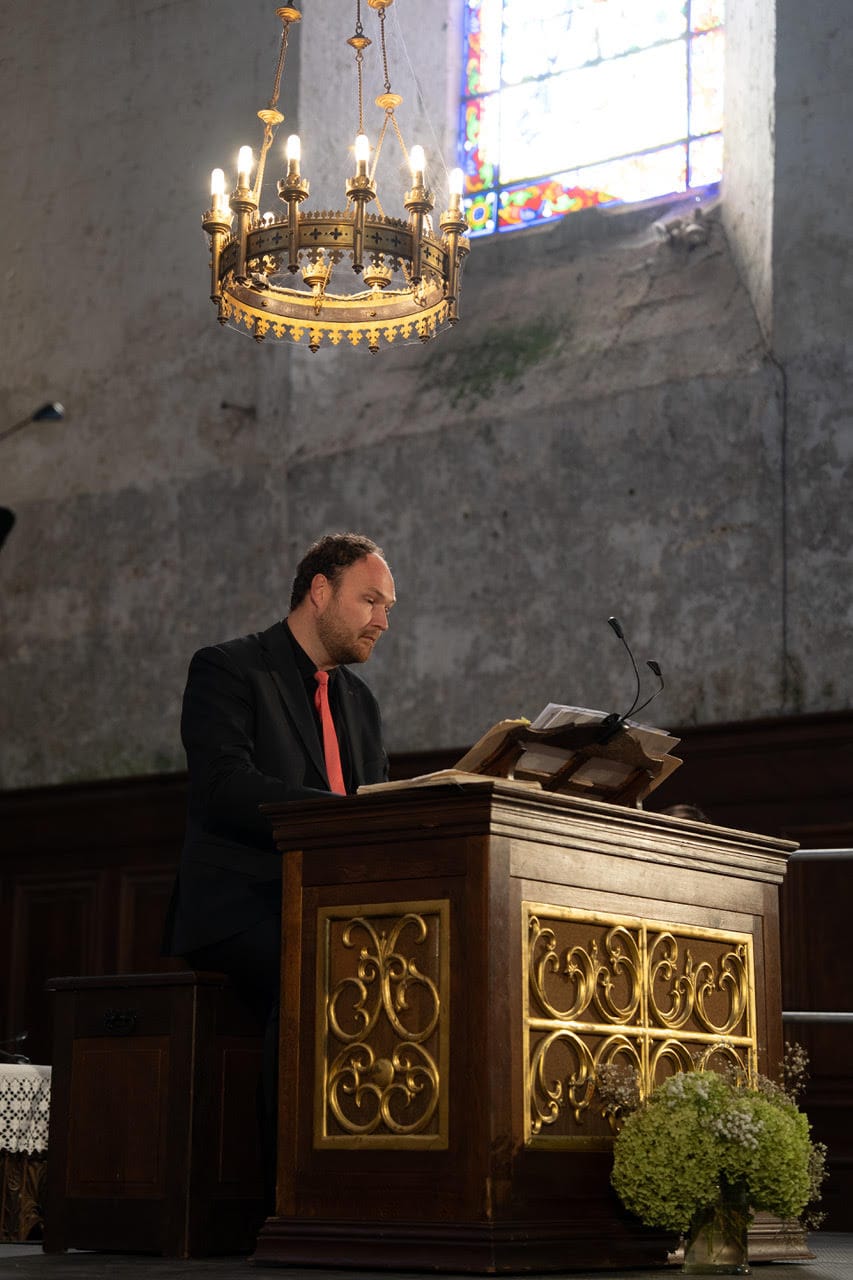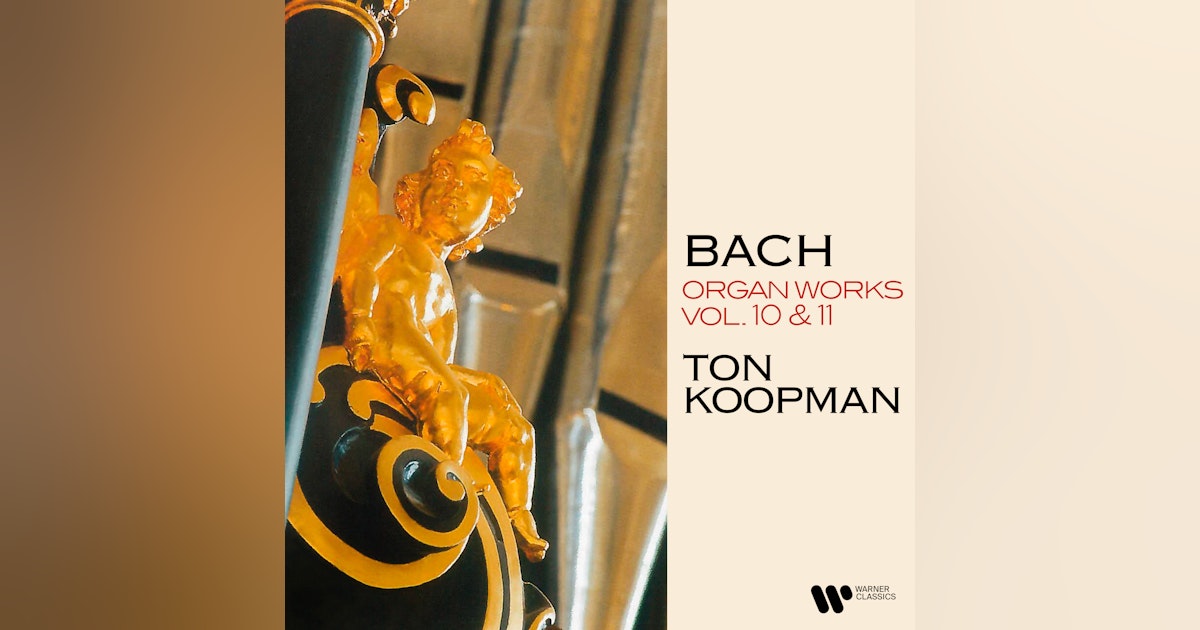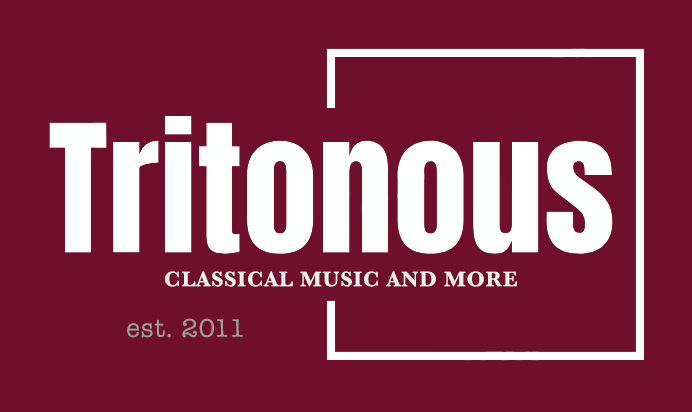
Itinéraire baroque en Périgord 2025: L’Itinéraire: Opening Recital
Sonata and Fantasy Gerard de Wit (origan); Église Saint Théodore de la Rochebeaucout, France, 02.08.2025
Bach Prelude and Fugue in F, BWV 559. Jesu, meine Freude, BWV Anh. 58.
Pachelbel Hexachodum Apollinis, 1699: Chaconne in D.
Telemann Fantasia No. 5 in A, TWV 33:5: I. Vivace
C. P. E. Bach Sonata in A minor, Wq 70/4 / H 85: Finale, Allegro
Different venues, same format: communal concert, then the audience splits into groups and moves around smaller churches in the area. All new venues, this year, including the gathering place, the Église Saint Théodore de la Rochebeaucourt. Often, the festival is launched with an organ recital by Ton Koopman himself; this time, it was the genial Gerard de Wit, a student of Koopman’s, and an eminently musical organist, in a selection of music broadly described via the concert’s title, Sonata and Fantasy. Marc Garnier’s positive organ was the instrument used, a fine, clear sound, For once, publicity blurb was correct: it precisely matched the feel of the brief recital. de Wit also founded the Dutch Baroque Soloists & Vocal Consort; his research into Bach includes the preparation of an edition of the 1729 version of the St Matthew Passion.
Who else to begin with, though, than Bach? Or perhaps, “perhaps Bach,” as the Six Short Preludes and Fugues, BWV 553-60 are of doubtful authorship, sometimes attributed to either Tobias or Ludwig Krebs. I’ll get into trouble for saying this, I know, but the F major Prelude and Fugue is suspiciously happy for JSB. Gerard de Wit certainly brought out the lightness of the Prelude while finding grandeur later on; the Fugue, too, is no shaker of the Heavens. A most interesting piece, and one worthy of investigation, whoever wrote it.
You can hear a version, with scrolling score, here. The great Marie-Claire Alain is the organist:
It made a fine concert partner to the chorale arrangement, Jesu, meine Freude, BWV Anh. 58, a terrifically fertile exploration of the well-known melody, brilliantly done by de Wit, whose fine rhythmic sense enabled the processes to unveil themselves completely naturally.
The inclusion of Pachelbel was perfect. A Chaconne (with 12 variations) from the collection Hexachordium Apollinis, found de Wit using stops effectively for the various variations. The piece is fascinating as it is simultaneously short but epic. De Wit gave it such life, form the start (to hear a version that most certainly does not, try Werner Jacob’s recording), animating each variation perfectly, the bright South German style impeccably communicated. I hope his performance generated Pachelbel-related enthusiasm in others in the audience; he’s far more than ‘that’ Canon.
Good to hear some Telemann. Scratch that, it’s always good to hear some Telemann. And his presence here always reminds me of the Telemann Year celebrations at Itinéraire Baroque (see this concert, for example). Just one movement (out of two, but in fairness the second is a Largo of only about 40 seconds): the Vivace from the F-Major Fantaisie. Often heard on harpsichord, de Wit offered a gloriously jaunty organ alternative. No less festive is the Allegro finale from C. P. E. Bach’s Sonata in A minor, Wq 70/4, full of C. P E. tropes such as the splitting of hands (something heard in the – here unheard – first movement also). There are also distinct tutti/soli elements, implying a debt to the Concerto grosso. de Wit seemed to particularly enjoy the teasing appoggiaturas.
A great start to what was to be a very varied day.
Ton Koopman’s BWV Anh 58 is available on adagio below, par of Volume 10 of his Warner cycle:










